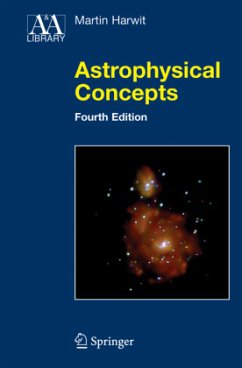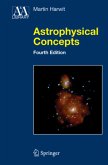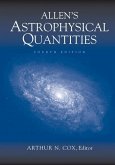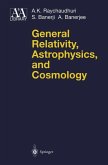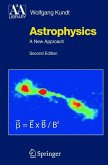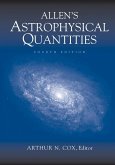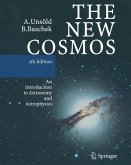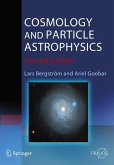Thirty-threeyears have passed since the ?rst edition of Astrophysical Concepts - peared. During this time astrophysics has undergone major revolutions. We have gained new perspectives on the Universe with the aid of powerful gamma-ray,- ray, and infrared telescopes, whose sensitivitiescould not have been imagined three decades earlier. We have become expert at snaring neutrinos to gain insight on - clear processes at work in the Sun and supernovae. We have direct evidence for the existence of neutron stars and gravitationalwaves, and persuasive arguments for the detection of black holes on scales of individual stars as well as galactic nuclei. Primordial ?uctuations, remnants from the ?rst moments in the expansion of the Universe have revealed themselves in the faint ripples marking the microwave sky. These ripples also document the ?rst appearance of dark matter now known to have dominatedthe formationand evolutionof all cosmic structure. And dark energy has gradually had to be acknowledged to be the dominant factor driving the expansion of the Universe today.
FROM REVIEWS OF THE PREVIOUS EDITION
"a clear, solid introduction to astrophysics ... that shows how physics can be applied to astronomical objects ... One of the strong points is the problems (that) give students a real feel for the sort of calculations astronomers must do ... were I teaching a junior/senior astrophysics course, this is the book I would use." AM.J.PHYS.
"This is a popular book among professional astrophysicists, produced with that meticulous detail and completeness of the house of Springer ... This is indeed a theoretician's book [and] Harwit has made a prodigious effort in organizing all this information in a logical sequence ... A masterly mathematical exposition of a galaxy of astrophysical processes." Astronomy
The great strength of the book lies in the lucidity and elegance with which chosen topics are quantitatively developed using elementary and clever arguments, instructive problems being distributed throughout, and in the skeptical spirit of inquiry that pervades the writing." NATURE
"Astronomer Harwit has finally updated his classic textbook to encompass the exciting developments of the decade since its last edition. It is ideal for those Scientific American readers who are mathematically literate and who want to pursue topics covered in the magazine to greater depth. Harwit takes a thematic approach to the subject, oriented around the guiding physical principles rather than the conventional sequence of planet, star, galaxy and cosmos. The approach rewards readers who just want to flip through the book as well as students who want to derive for themselves some of the basic equations in astronomy." SCIENTIFIC AMERICAN
"a clear, solid introduction to astrophysics ... that shows how physics can be applied to astronomical objects ... One of the strong points is the problems (that) give students a real feel for the sort of calculations astronomers must do ... were I teaching a junior/senior astrophysics course, this is the book I would use." AM.J.PHYS.
"This is a popular book among professional astrophysicists, produced with that meticulous detail and completeness of the house of Springer ... This is indeed a theoretician's book [and] Harwit has made a prodigious effort in organizing all this information in a logical sequence ... A masterly mathematical exposition of a galaxy of astrophysical processes." Astronomy
The great strength of the book lies in the lucidity and elegance with which chosen topics are quantitatively developed using elementary and clever arguments, instructive problems being distributed throughout, and in the skeptical spirit of inquiry that pervades the writing." NATURE
"Astronomer Harwit has finally updated his classic textbook to encompass the exciting developments of the decade since its last edition. It is ideal for those Scientific American readers who are mathematically literate and who want to pursue topics covered in the magazine to greater depth. Harwit takes a thematic approach to the subject, oriented around the guiding physical principles rather than the conventional sequence of planet, star, galaxy and cosmos. The approach rewards readers who just want to flip through the book as well as students who want to derive for themselves some of the basic equations in astronomy." SCIENTIFIC AMERICAN

